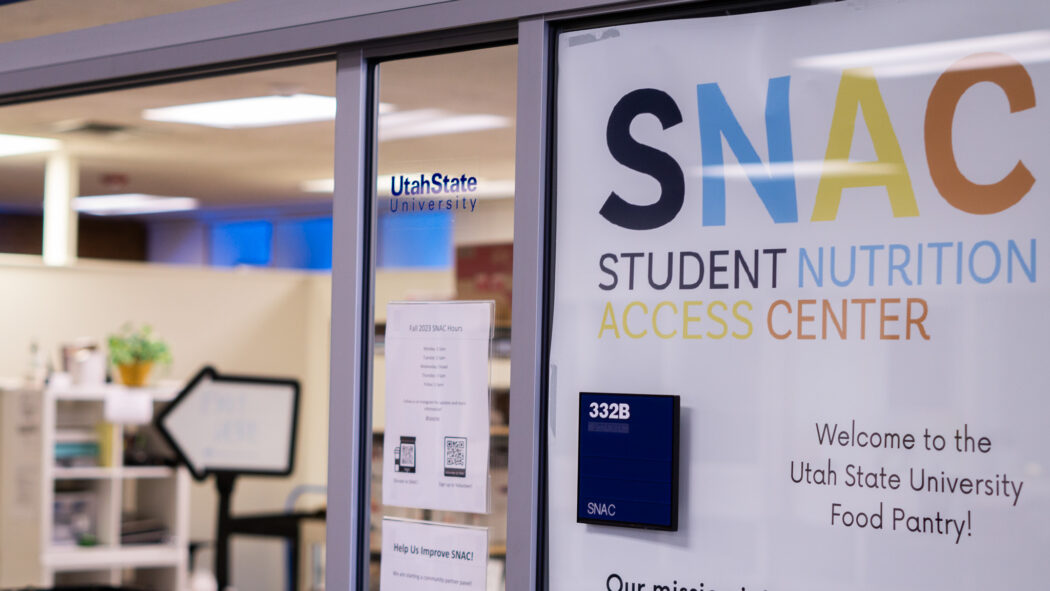SNAC supporting students
A long line had already formed at SNAC, the Student Nutrition Access Center. Students chatted as they waited their turn to swipe their student IDs and fill their plastic grocery bags with free locally-picked fresh fruit, pantry staples and bagels left over from a cafe in the TSC.
No one was asked if they were struggling with food insecurity. The only qualification for accessing food through SNAC is being a Utah State University student.
SNAC co-director Shayla Adams is partially to thank for keeping SNAC running smoothly.
“We are open for all students to come, no questions asked,” Adams said, “It’s really a place where any student can come no matter what their financial situation or their home situation is.
Sophomore Aggie Johnson says SNAC helps her get through her homework by providing access to food.
“It’s just convenient, you know? I like it because it provides steady snacks,” Johnson said. “Sometimes I’ll be hungry just sitting here, working on my homework. I can pop in and grab a doughnut or a bagel.”
Johnson also utilizes SNAC to supplement her groceries with their pantry staples, like macaroni and cheese.
“I think everyone should use it. You know, everyone could use a box of macaroni and cheese,” Johnson said.
SNAC works to address food insecurity on campus by providing access to nutritious food. They also help limit food waste from on-campus restaurants by gathering unused food and redistributing it to students.
“Our main mission is decreasing food insecurity and also decreasing the amount of food waste on campus,” Adams said. “So, we do food recovery. We go down to the Hub and the Quickstop, basically any restaurant on campus, and receive food from them.”
A survey distributed by SNAC found nearly 43% of respondents said they had “cut the size of meals or skip meals because there wasn’t enough money for food,” and Adams said demand is increasing.
“Our demand has increased every year,” Adams said. “We’re trying to reach out to local restaurants and businesses to do more food recovery from them as well so we can serve more students.”
SNAC does not rely on student fees; instead, it exclusively uses donations and food recovery to line the shelves of its pantry. Volunteers can participate in gleaning, which provides fresh produce to the pantry by partnering with local community members to help harvest food that would otherwise go to waste.
“We only rely on donations from the community. So, if the food pantry doesn’t have enough food for the week, then we don’t have enough food for that week,” Adams continued. “That’s been a struggle, and we’re trying to reach out to more places to get more options for food.”
Though SNAC still relies on donations, a recent move into the College of Agriculture and Applied Sciences has Adams hopeful. Through funding provided by the college, SNAC will be able to increase food options for students.
“They have a lot more funding available,” Adams said. “That’s been nice to have more employees and have more options for students.”
Anyone who would like to visit SNAC can check their website at usu.edu/snac for additional information such as hours, donations or volunteering.

